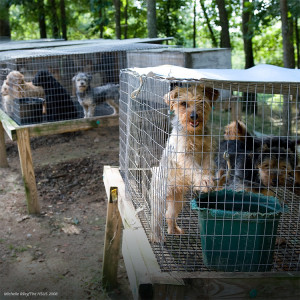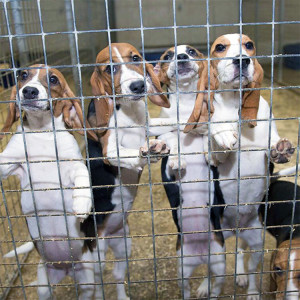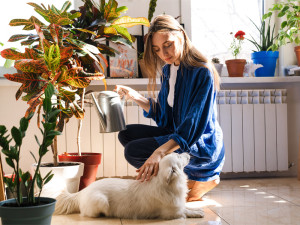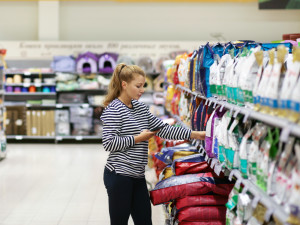How to Shop Brands That Don’t Test on Animals
Find out how to buy truly cruelty-free products.
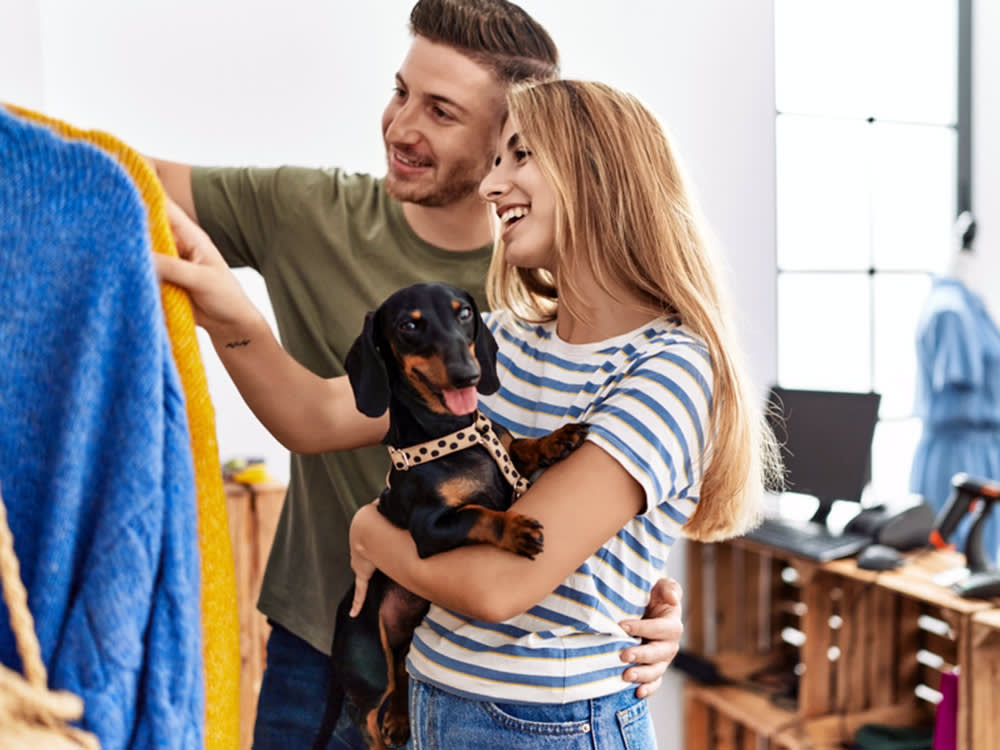
Share Article
If you’re a pet parent, you probably hate the idea of any animals suffering, especially just for an eyeliner or household cleaner. However, navigating cruelty-free products and trying to find items that haven’t been tested on animals can be a major minefield, especially if you aren’t used to scouring labels for red flags. It’s complicated and can feel as if companies want to throw you off. With the help of some cruelty-free experts, we’re here to clear things up.
When it comes to cosmetics, things can get confusing. Thankfully, animal testing in cosmetics isn’t required by law in the U.S. and there have been some big leaps in recent years. California, Hawaii, Illinois, Louisiana, Maine, Maryland, Nevada, New Jersey, New York, Oregon, and Virginia have all passed lawsopens in new tab that ban the sale of cosmetics that have been tested on animals. The next step would be the passing the federal Humane Cosmetics Act 2023opens in new tab, which Reps. Don Beyer (D-VA), Vern Buchanan (R-FL), Paul Tonko (D-NY), Ken Calvert (R-CA) and Tony Cárdenas (D-CA) introduced in Congress last September. This legislation would prevent cosmetics animal testing and the sale of animal-tested cosmetics, and generally prohibit animal testing in the evaluation of cosmetic product.
Thankfully, there has also been progress in other areas. Per the FDA Modernization Act 2.0opens in new tab and as of January 2023, a drug is no longer requiredopens in new tab to be animal tested before it’s given to humans in trials. As of 2023, China has stopped requiring opens in new tab post-market animal testing. Previously, even an item that wasn’t tested on animals in the U.S. was required by law to do so when entering mainland China. That made buying cosmetics really difficult, because an item could technically claim to be cruelty-free while not actually being so. Unfortunately, there are still many ingredients and products that do require animal testingopens in new tab in China, so it’s still safer to follow some basic guidelines.
Look for the leaping bunny.
A few logos on packaging make it super easy to tell if a product is truly cruelty free. You can always trust anything with the leaping bunnyopens in new tab, PETA’s “Beauty Without Bunniesopens in new tab” and the “choose cruelty-free” logo. The leaping bunny is the first established program and is the most rigorous and trusted. They’ve been around for almost 30 years and are made up of eight national animal protection groups who form the Coalition for Consumer Information on Cosmetics (CCIC). Their standard is international, making shopping for cruelty-free products easier.

Charlotte Hubbardopens in new tab is a cruelty-free makeup artistopens in new tab. She says that, in particular, we need to be wary of larger companies that may test on animals universally. While the smaller brands might not test on animals, if they’ve been bought by a larger company, there may be other brands under the umbrella that do. It’s confusing—there’s a list to helpopens in new tab.
She says that MAC, L’Oreal, Rimmel, and Estee Lauder are all brands to be wary of. Basically, anything owned by big companies like Unilever and Procter and Gamble, no matter how greenwashed the packaging of the smaller brand is. “Red flags for green washing to look for are natural colors in branding, like greens, browns, and beige shades,” Hubbard says. There are some brands doing everything right; Hubbard names LUSH, e.l.f. and Faith in Nature.
Other sectors are sadly lagging behind beauty. If you’re a dog parent, you’ll be happy to know cosmetics are not tested on dogs anywhere in the world, but unfortunately, many other products are. Dogs are still used for toxicology studies for things like weed-killer, pesticides, and medicines. There are groups urging companies to follow the three Rsopens in new tab: replacement, reduction, and refinement. That means replacing animals with non-animal alternatives, reducing the minimum, and refining procedures to minimize suffering.
For now, while we can try our best to avoid products that require animal suffering, when it comes to medicines, there is very little that can be done. Most medicines and procedures are tested on animals, and while many people are searching for an alternative, a cruelty-free future seems a long way away.
In the U.S., household products, like weed-killer and pesticides, are often tested on animals, including dogs, to get an idea of how they might affect the health of a human being. These tests are cruel, outdated, and pointless. But if it’s a product you need, how can you ensure that it’s cruelty free? The leaping bunny program actually now certifies household products, so you can be reassured that they were not tested on animals at any point. There is even a section on their website that can help you navigate household products, car care, and other non-beauty itemsopens in new tab.
Understand the language here.
While a product may claim to be vegan, organic, or another buzzword, that doesn’t necessarily make it cruelty-free. You can only trust the three recognized logos. The less explicit and transparent a brand is — and the more it relies on “green” buzzwords — the more you should worry that they might not be as cruelty free as they claim.
However, if a product is not vegan, many people might not consider it to be cruelty-free at all; many everyday lip balms, fabric softeners, and even toothpastes may contain animal fat or bones. Cruelty-free makeup artist Kay Louiseopens in new tab says that you should avoid carmine, shellac, silk, and non-vegan squalene. Some people may also choose to avoid lanolin and beeswax, but these can be cruelty-free.
Gemma Thomas is the founder of cruelty-free store Animal Kindopens in new tab. She says that “Unless a product has a Leaping Bunny or PETA logo on it, it is entirely possible that it has been tested on animal. If not the product itself, then one of its ingredients has been tested on animals — if not by the brand itself, by one of its suppliers. This is especially true of brands that sell their products in mainland China.” She points out that, while the Humane Society International (HSI) estimates that more than 115 million animalsopens in new tab worldwide are used for testing each year, it’s likely that the number is much higher, as some animals are excluded from the figures.
Don’t be fooled.
Thomas points out that many companies mislead us by saying things like “we only test on animals when there is no other alternative” or “we only test on animals where required by law”. She believes that Leaping Bunny is the gold standard for many reasons, but one is that brands have to recommit each year, so they can’t fly under the radar. Leaping Bunny holds brands to a ton of standards: They can’t carry out their own animal testing or fund third parties or suppliers to carry it out on their behalf, they must have a robust means of monitoring their suppliers to ensure that ingredients themselves are cruelty-free, and they have to participate in ongoing, independent compliance audits.
Unfortunately, Thomas adds, while PETA’s Beauty Without Bunnies program gives you some idea of whether something is cruelty free, it isn’t quite as good as Leaping Bunny, because PETA does not conduct independent audits to determine compliance to their cruelty-free standards. They only require that a brand completes a form and submits a statement of assurance that has been signed by their CEO, which is nowhere near as rigorous.
Navigating the world of cruelty-free products can get really overwhelming, especially in sectors with less regulation than cosmetics thankfully now has. While it can be difficult for any of us to live a completely cruelty-free life, if you’re a pet parent, it can feel hypocritical or wrong to consume anything that has hurt an animal while claiming to love yours. Luckily, directories like Leaping Bunnyopens in new tab and Cruelty-Free Kittyopens in new tab are here to make that switch easier. One day, maybe every dog and rabbit will be just as happy as yours.
References:
Celebrity Advocates Lobby Congress to Pass the Humane Cosmetics Actopens in new tab
268+ Companies That Test On Animals (2024 Update)opens in new tab
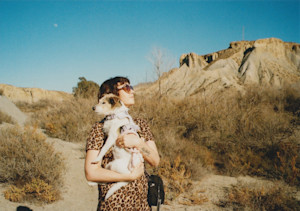
Marianne Eloise
Marianne Eloise’s work has appeared in The New York Times, The Guardian, The Cut, Vulture, and more. She is also the author of an essay collection Obsessive, Intrusive, Magical Thinkingopens in new tab. She has been going on adventures with her dog Bowie since she was 17.
Related articles
![eco-friendly pet parent pets down inside of indoor garden]()
How to Be an Eco-Friendly Pet Parent
Reducing your paw print can seem daunting. Consider these simple tips.
![A woman in a black and white striped shirt and jeans looking up ingredients from a bag of pet food on her phone in a pet store]()
What’s Actually On (and In) a Bag of Pet Food?
Want your pet to eat healthily? Dig in and learn how to read their food label.
![petaluma sustainable pet food the wildest mars]()
The Sustainable Pet Food Movement is Fired Up
From cricket kibble to miso mice, leading brands are exploring how sustainable pet food products can reduce carbon paw prints.
![Three eco-friendly pet grooming products displayed in a collage.]()
11 Eco-Friendly Pet Grooming Products
Package-free brushes, plant-based wipes, certified-organic shampoos, and more.
![Lauren Singer sitting on street step hugging her tan dog named Rose]()
Don’t Be Trashy: Follow Lauren Singer’s Low-Waste Pet Care Tips
The founder of Package Free says there’s a low-waste alternative to every pet product sitting in your trash right now.
